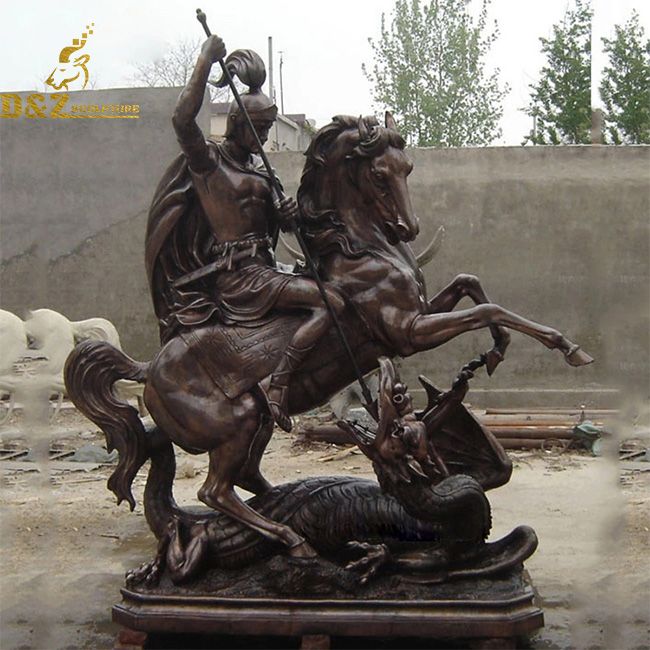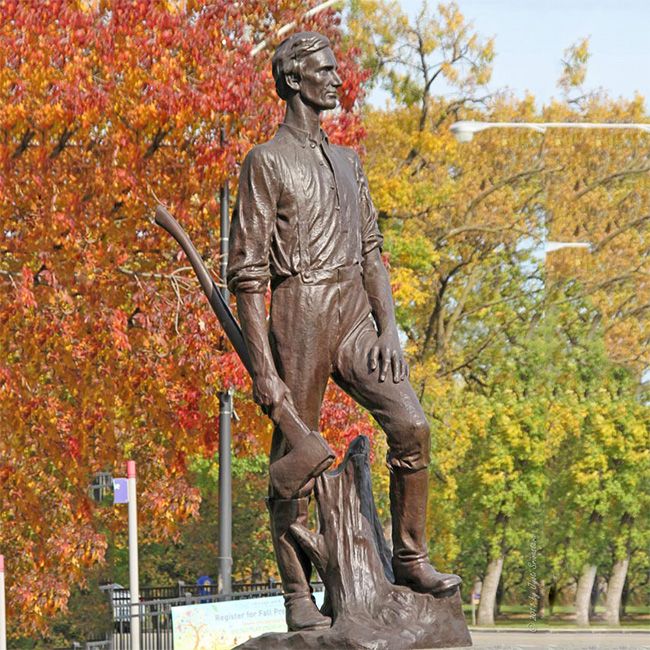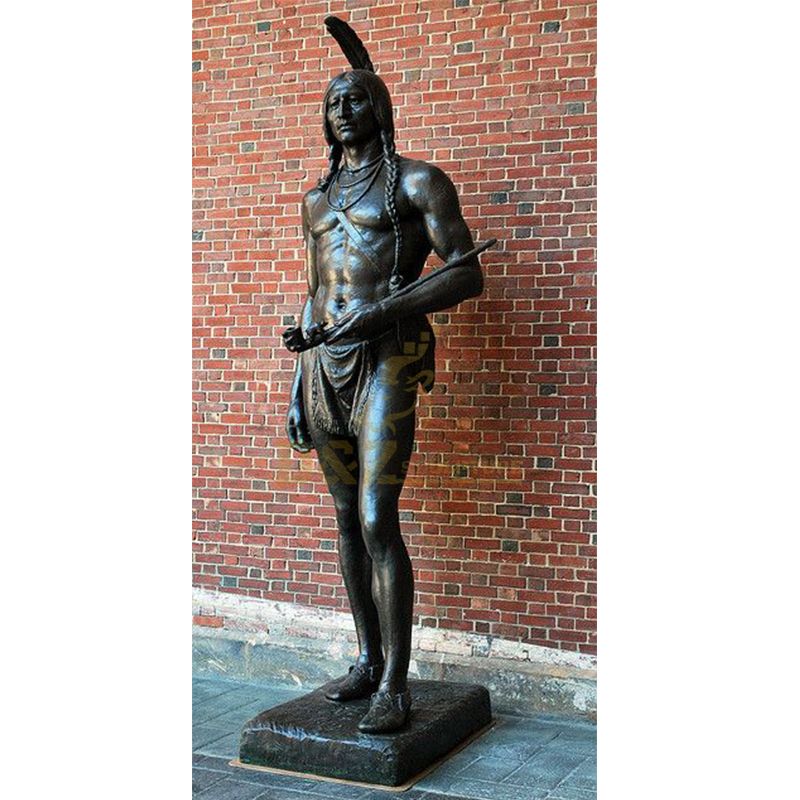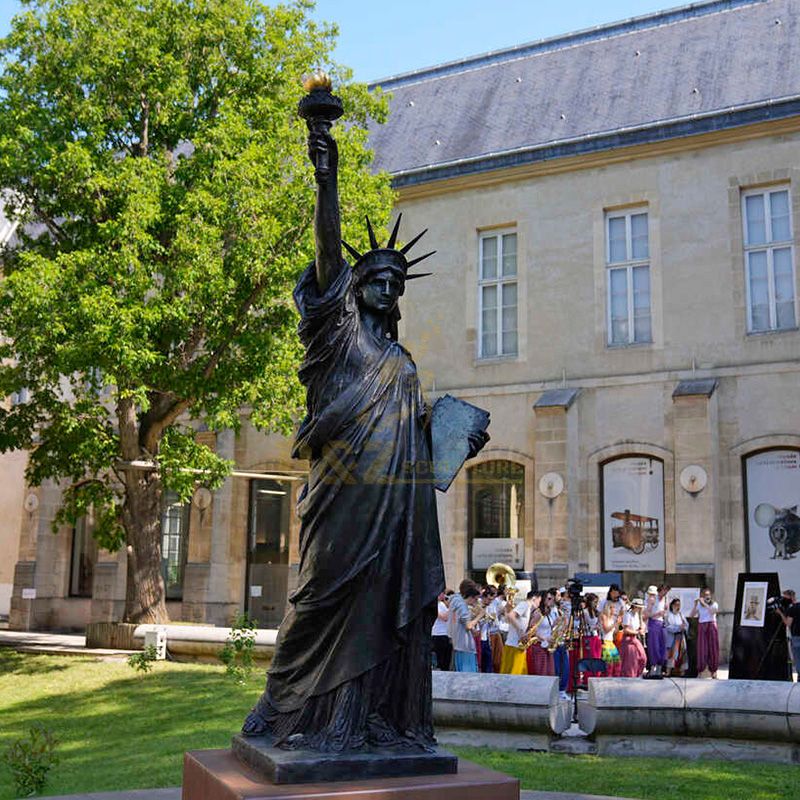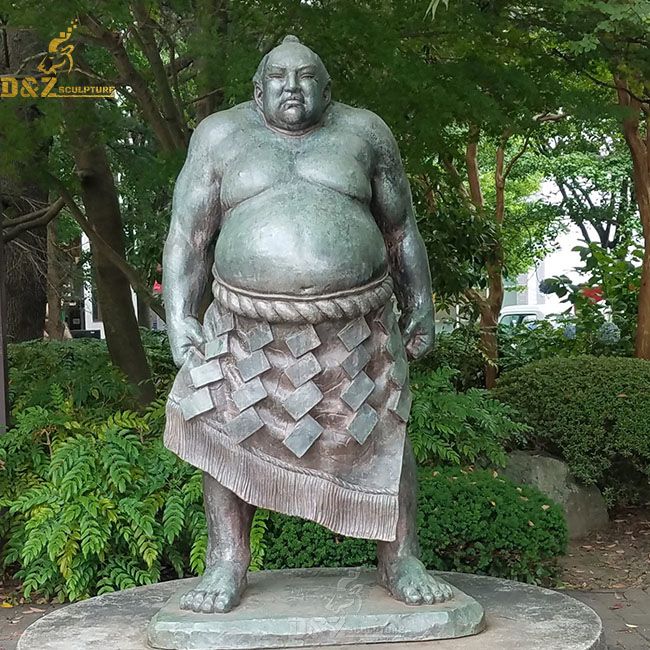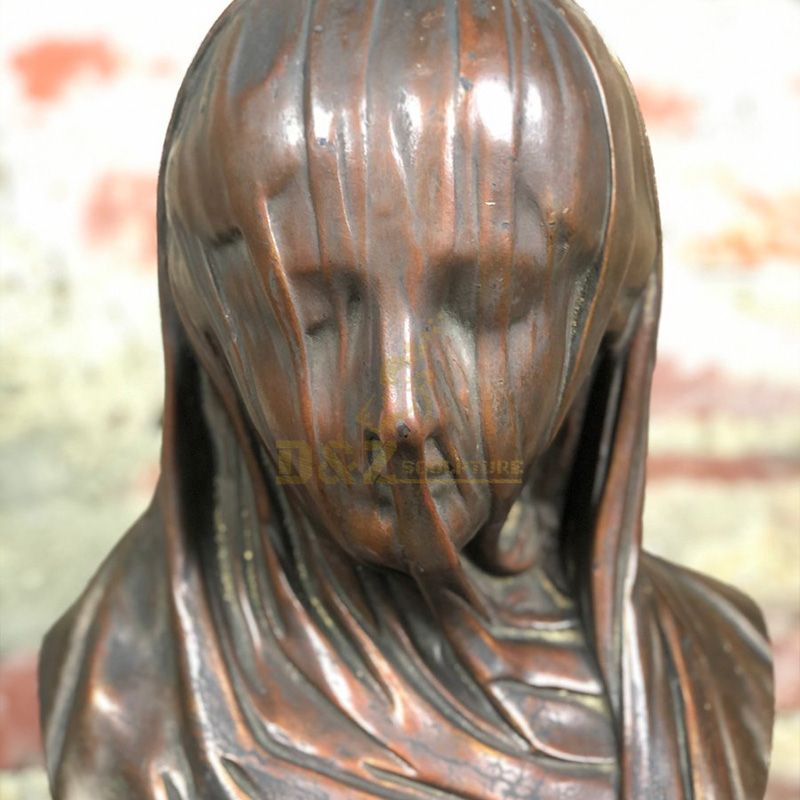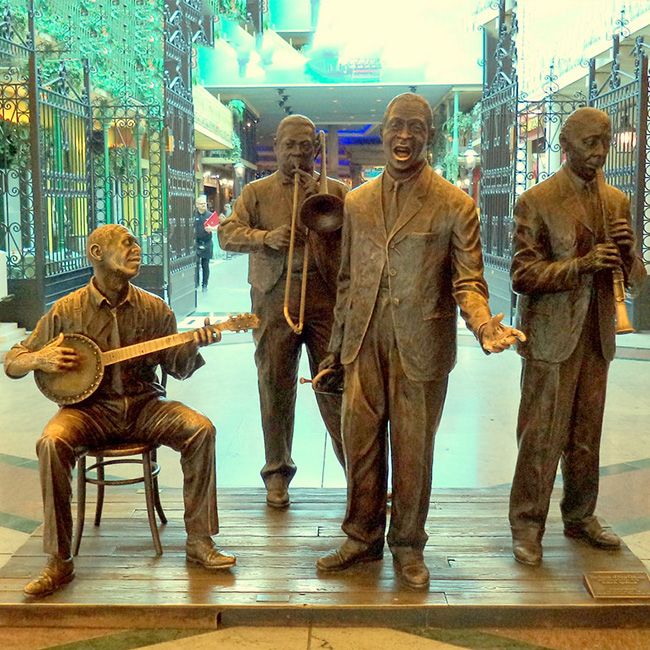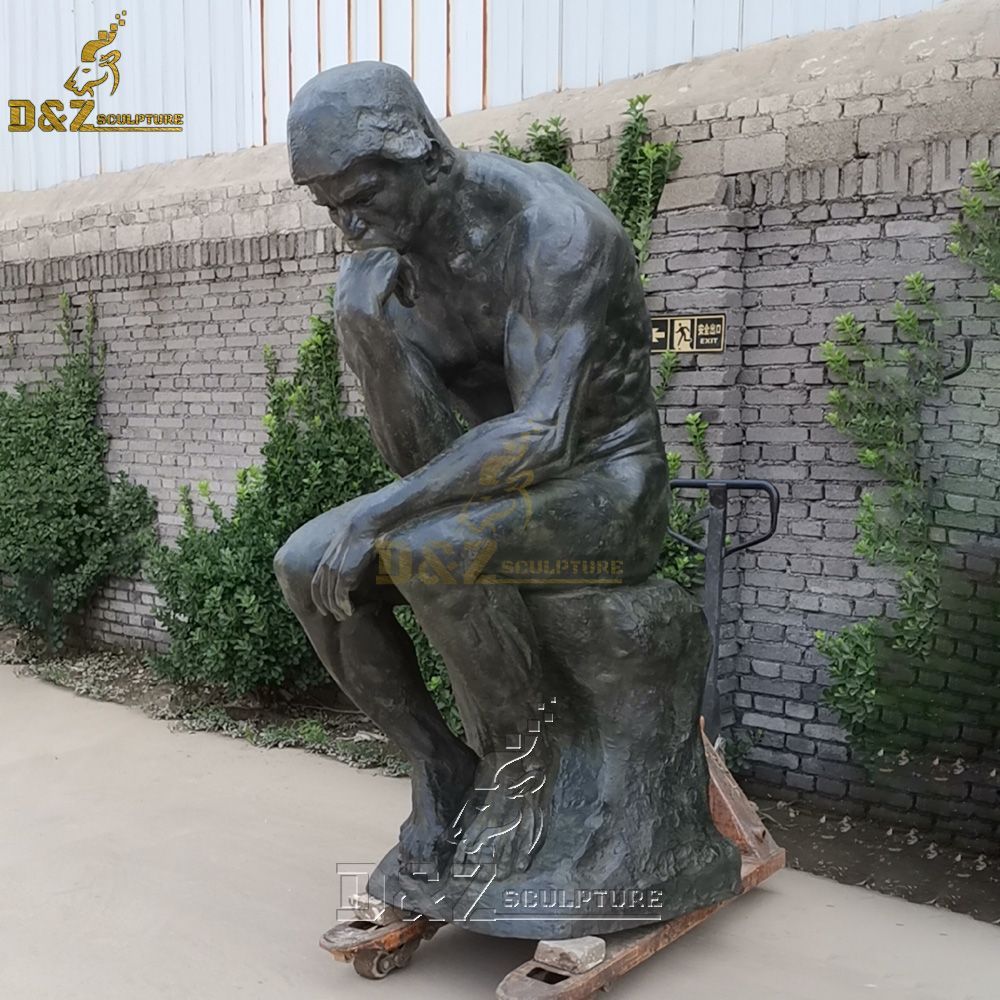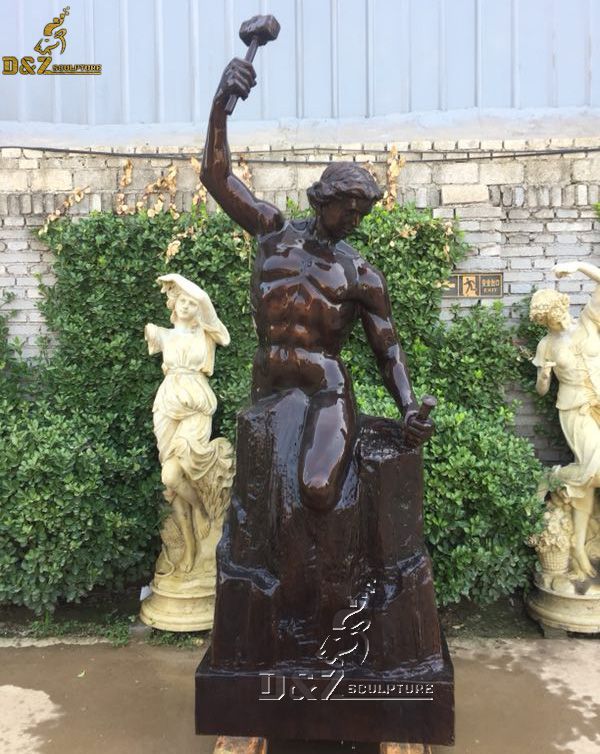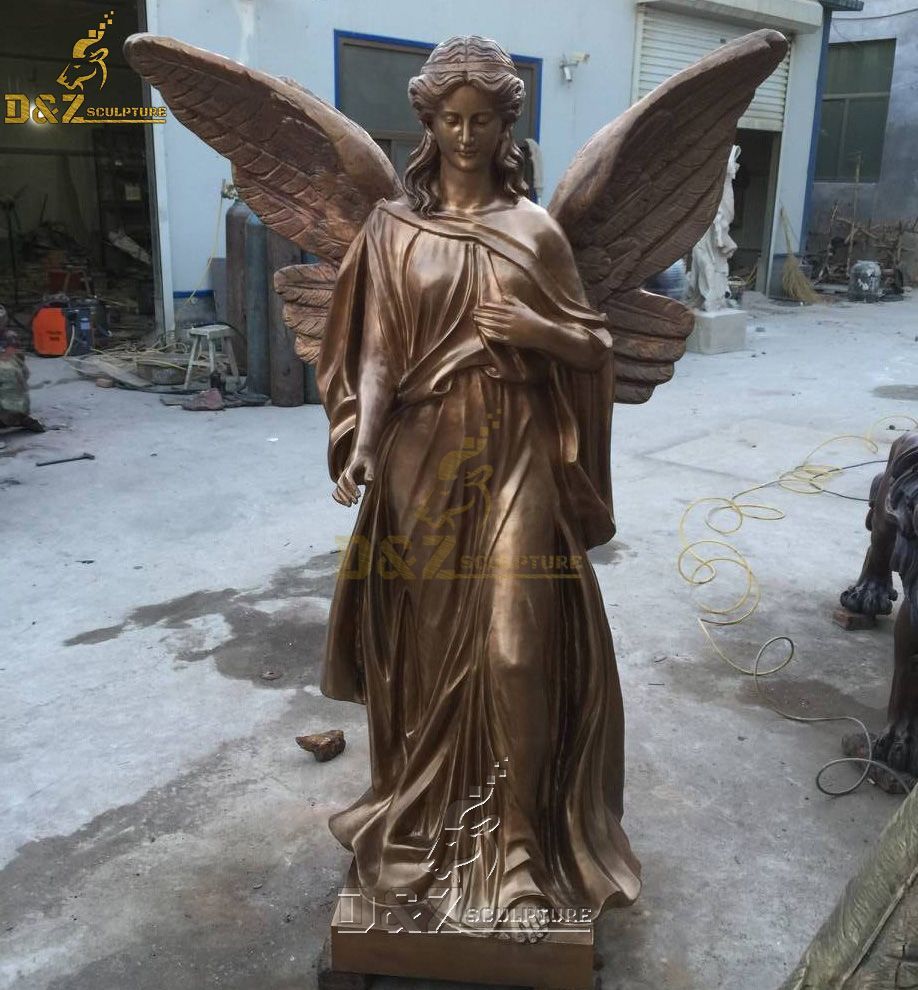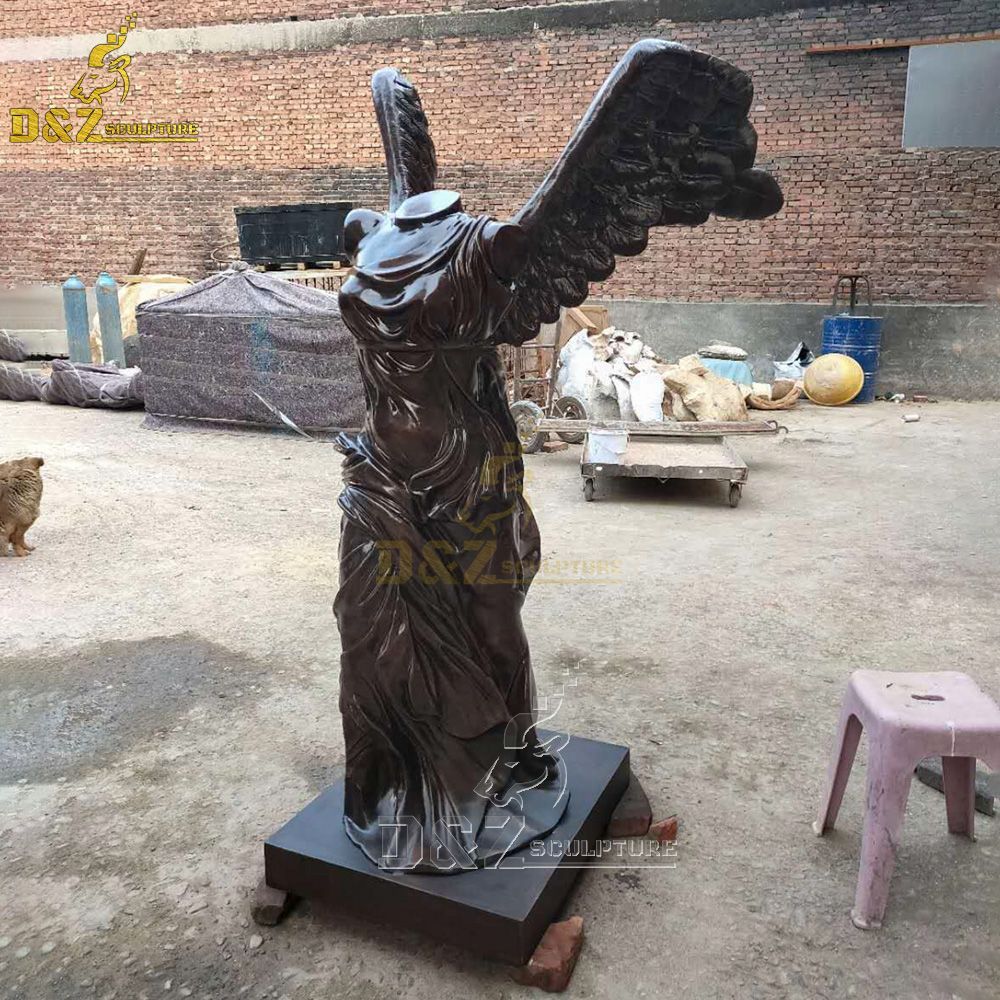On the statue, St. George wears feathers on his head and battle clothes, riding on a horse without a saddle and stirrups, holding a rein in his left hand, the horse's front hoof volleys, and the sound of the horse shook the dragon. With the spear in his right hand, the stabbed dragon fell on its back, and the horse's hoof stepped on the struggling dragon. The statues of St. George and the Dragon include moderate proportions of people, horses, and dragons, reasonable layout, fine carvings, and distinct reliefs. The scene of "St. George Slaying the Dragon" is vividly expressed lifelike, and highly impactful visual effects.
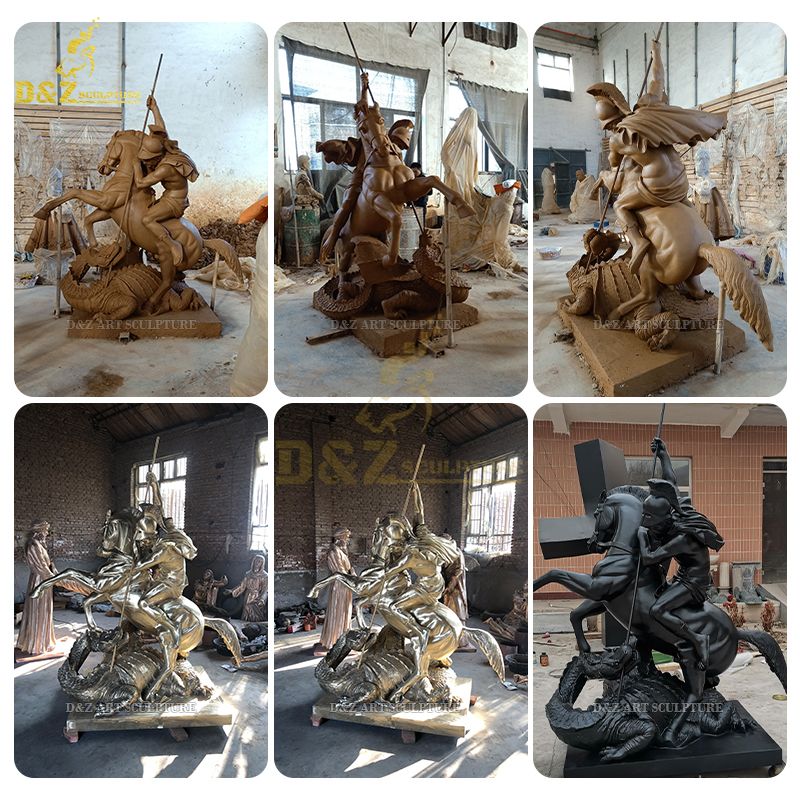
St. George's Dragon Slaying Story:
Legend has it that there is a castle in Europe, and the daughter of the castle owner is very beautiful and kind. When the dragon learned about it, he threatened the castle to offer its daughter as a sacrifice to it. Just when the dragon was about to receive this "sacrifice", the knight of God, Saint George, suddenly appeared in the name of the Lord, and after a fierce battle, Finally eradicating the extremely ferocious dragon, and at the same time the dragon blood gradually formed a cross shape.
St. George, a Palestinian born around 260 AD, is said to have become a Roman cavalry officer. He is brave and good at fighting, has won many battles, and has made extraordinary achievements. In 303 AD, he was killed while preventing the persecution of Christians. He was only forty-three years old. In 494 AD, he was canonized for Pope Glasius I.

